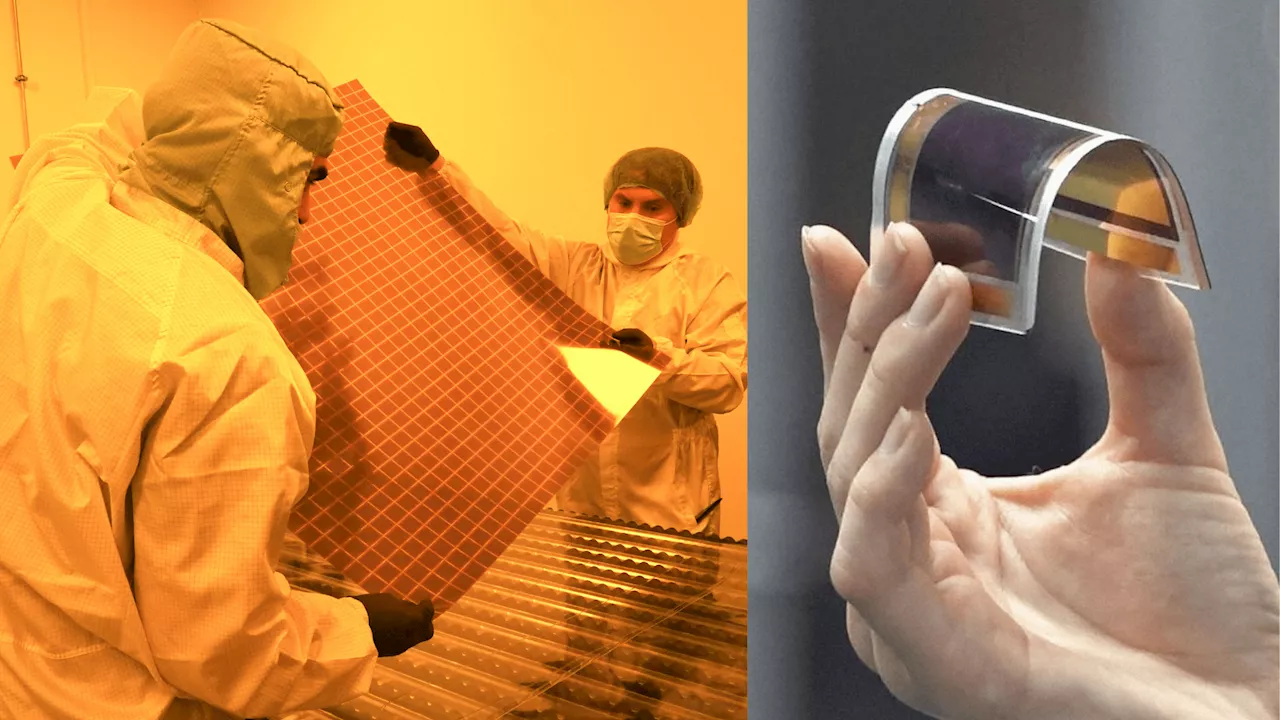Governments and scientists worldwide are racing to unlock the full potential of perovskite solar cells; what is this next-gen solar tech?
Perovskite solar cells operate on a principle where sunlight interacts with a thin layer of hybrid organic-inorganic lead or tin halide-based perovskite material.Developed by Tsutomu Miyasaka in 2009, perovskite solar cells emerged as a breakthrough in photovoltaics and a promising alternative to traditional solar technologies. The world’s most advanced labs are experimenting with these next-gen solar cells capable of absorbing a broader spectrum of sunlight.
Read on to learn about perovskite solar technology and how it is already bringing a major shift in solar technology. Perovskites are versatile materials known for their exceptional compositional flexibility, making them suitable for various high-tech applications beyond solar cells, such as memory chips and ultrasound machines. Perovskite materials like methylammonium lead halide and all-inorganic cesium lead halide are particularly appealing due to their cost-effectiveness.
About 90% of solar panels use silicon semiconductors, which cannot be processed in a solution bath without risking defects that impair functionality. In contrast, perovskite semiconductors are highly fault-tolerant and can be processed into semiconductor ink, making them suitable for creating lightweight andand car roofs.
The use of lead raises significant health and environmental safety issues, necessitating research into non-toxic alternatives.
Environment Perovskite Perovskite Solar Cells Solar Sustainability
United States Latest News, United States Headlines
Similar News:You can also read news stories similar to this one that we have collected from other news sources.
 Blade-coated perovskite solar cells achieve 31.2% power conversion efficiencyThe team enhanced the performance of blade-coated tandems by incorporating 2D perovskite layers at the bottom interface. These modifications reportedly increased the blade-coated tandem performance to a certified PCE of 31.2%.
Blade-coated perovskite solar cells achieve 31.2% power conversion efficiencyThe team enhanced the performance of blade-coated tandems by incorporating 2D perovskite layers at the bottom interface. These modifications reportedly increased the blade-coated tandem performance to a certified PCE of 31.2%.
Read more »
 Investigating performance limitations in cost-effective materials for perovskite solar cellsResearchers investigated the internal properties of low-cost materials used in perovskite solar cells, which are attracting attention for their high efficiency, using electron spin resonance (ESR) to analyze these materials at a microscopic level.
Investigating performance limitations in cost-effective materials for perovskite solar cellsResearchers investigated the internal properties of low-cost materials used in perovskite solar cells, which are attracting attention for their high efficiency, using electron spin resonance (ESR) to analyze these materials at a microscopic level.
Read more »
 KRICT sets world record with 20.6% efficient large-area perovskite solar cellsThe research team at KRICT optimized its in-house material synthesis methods, film uniformity by scalable processes, and laser ablation control, resulting in a certified efficiency of 20.6% for large-area perovskite solar modules.
KRICT sets world record with 20.6% efficient large-area perovskite solar cellsThe research team at KRICT optimized its in-house material synthesis methods, film uniformity by scalable processes, and laser ablation control, resulting in a certified efficiency of 20.6% for large-area perovskite solar modules.
Read more »
 Stability of perovskite solar cells doubled with protective coatingScientists have developed a new protective coating that significantly extends the life of perovskite solar cells, making them more practical for applications outside the lab.
Stability of perovskite solar cells doubled with protective coatingScientists have developed a new protective coating that significantly extends the life of perovskite solar cells, making them more practical for applications outside the lab.
Read more »
 Perovskite research boosts solar cell efficiency and product lifeAn international team has identified a strategy to improve both the performance and stability for solar cells made out of the 'miracle material' perovskite by mitigating a previously hidden degradation pathway.
Perovskite research boosts solar cell efficiency and product lifeAn international team has identified a strategy to improve both the performance and stability for solar cells made out of the 'miracle material' perovskite by mitigating a previously hidden degradation pathway.
Read more »
 The Roku Channel app gets more functionality on Google TVThe Roku Channel is adding better integration with Google TV to allow its content on the home page.
The Roku Channel app gets more functionality on Google TVThe Roku Channel is adding better integration with Google TV to allow its content on the home page.
Read more »
